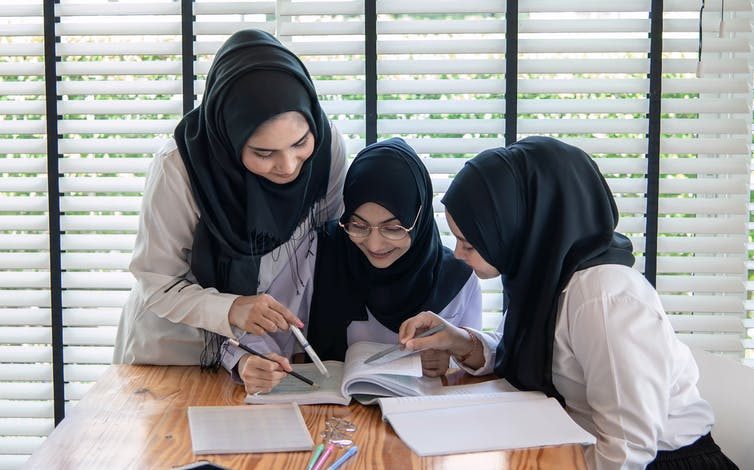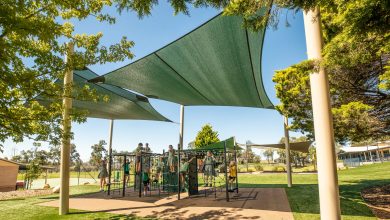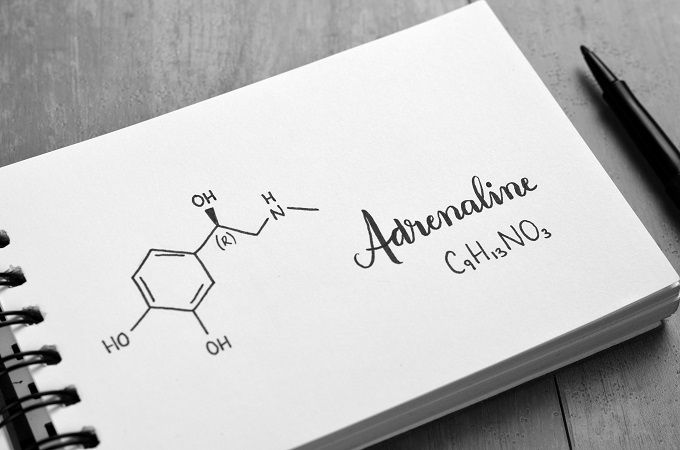Senior maths and science are super popular with Islamic-school students, but that could limit their career options
More Islamic-school students in years 11 to 12 are enrolled in science and maths than other students in Australia.

In our study of Islamic-school students’ career aspirations, about 28% of our sample were enrolled in science compared to the national enrolment rate of about 18%. Maths enrolment rates were at around 26% for the Islamic senior students in our sample, a little higher than the national average of about 25%.
But the difference was higher for Islamic-school girls, 27% of whom were enrolled in maths (compared to about 25% of male students).
We also found while courses in Arabic and Islamic studies are fundamental to the ethos of Islamic schools, the majority of students we surveyed didn’t take these subjects. Enrolment rates in Arabic and Islamic studies were about 2% and 6% respectively.
Our study drew attention to the general lack of vocational courses offered in Islamic schools, while confirming anecdotal evidence the courses on offer are heavily weighted to science and maths.
Islamic-school students need more course options and alternative career pathways (such as vocational education and training). The currently traditional pathways on offer may restrict their future prospects.
Maths and science the most popular courses
There are around 46 Islamic schools in Australia, with 38,300 students.
We collected data from nine schools in South Australia, Victoria and NSW as these are the states with the highest concentration of Islamic schools. A total of 146 year 11 and 12 students responded to our questionnaire about the courses they took and career aspirations — 68 girls and 78 boys.
While this number of students may seem low, if we exclude primary schools, this equates to a participation rate of around 20% senior school students in Islamic Schools across Australia.
We also collected data from The Australian Curriculum, Assessment and Reporting Authority to calculate the subject participation rates among senior school students nationally.
Like other Australian schools, Islamic-school students can choose a combination of courses from eight core learning areas prescribed in the Australian curriculum: English; mathematics; science; humanities and social sciences; arts; health and physical education; technologies; and languages.
In our survey, more Islamic-school students were enrolled in maths and science than any other course.
But only about 4% students in our sample were enrolled in information and communications technology compared to 12% nationally.
And fewer than 1% were enrolled in art — versus almost 10% of students nationally. More Islamic-school females were enrolled in art and Arabic (languages), which align with national trends. None of the males in our sample took an art subject.
In relation to humanities and social sciences — which includes business, accounting and legal studies — female participation (more than 26%) was almost equal to male participation (27%) in our sample.
More males in our sample were studying accounting (about 4% in comparison to about 1% of famales) and business management (about 6% versus 4%).
Enrolment rates in physical education among the Islamic-school girls (more than 6%) were more than double those of boys (3%). This finding was somewhat surprising.
What they want to study at uni
Most students who filled out our questionnaire wanted to study medicine, followed by business, engineering, law, teaching and other — in that order.
Interest in medicine was about 35% among females compared to about 28% among males. Desire for engineering among males (more than 16%) was almost three times that of females (about 6%).
Most Islamic schools in Australia are located in middle- to lower-socioeconomic areas with varying levels of educational advantages and disadvantage.
Because courses like medicine and law are costly and competitive, only a minority of these students will get into their desired courses and many will need to plan for alternative options. This may include doing a vocational education and training (VET) course.
Islamic schools need to offer courses that take into account the preferences of their students as well as the realities of university entry. Students need alternative pathways to courses that straddle their fields of interest — such as nursing, childhood education, electrotechnology and building design.![]()







